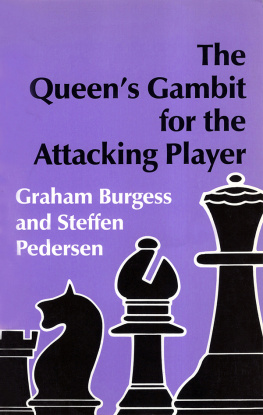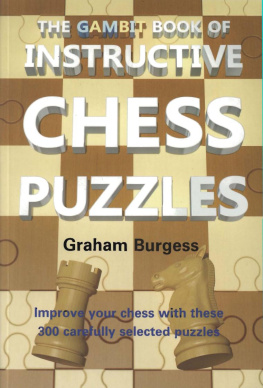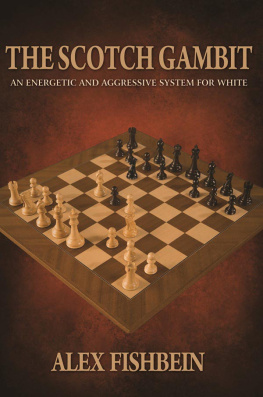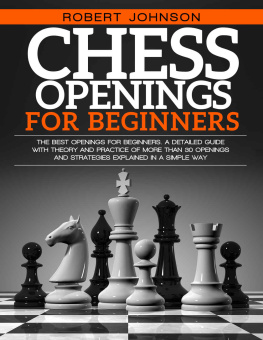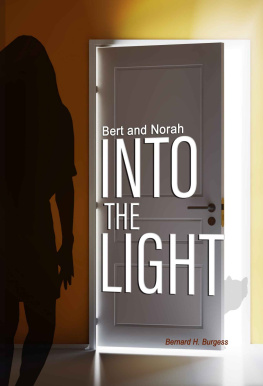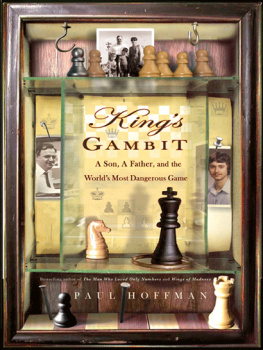Graham Burgess - The Queens Gambit for the Attacking Player
Here you can read online Graham Burgess - The Queens Gambit for the Attacking Player full text of the book (entire story) in english for free. Download pdf and epub, get meaning, cover and reviews about this ebook. publisher: Pavilion Books, genre: Home and family. Description of the work, (preface) as well as reviews are available. Best literature library LitArk.com created for fans of good reading and offers a wide selection of genres:
Romance novel
Science fiction
Adventure
Detective
Science
History
Home and family
Prose
Art
Politics
Computer
Non-fiction
Religion
Business
Children
Humor
Choose a favorite category and find really read worthwhile books. Enjoy immersion in the world of imagination, feel the emotions of the characters or learn something new for yourself, make an fascinating discovery.
- Book:The Queens Gambit for the Attacking Player
- Author:
- Publisher:Pavilion Books
- Genre:
- Rating:4 / 5
- Favourites:Add to favourites
- Your mark:
- 80
- 1
- 2
- 3
- 4
- 5
The Queens Gambit for the Attacking Player: summary, description and annotation
We offer to read an annotation, description, summary or preface (depends on what the author of the book "The Queens Gambit for the Attacking Player" wrote himself). If you haven't found the necessary information about the book — write in the comments, we will try to find it.
The Queens Gambit for the Attacking Player — read online for free the complete book (whole text) full work
Below is the text of the book, divided by pages. System saving the place of the last page read, allows you to conveniently read the book "The Queens Gambit for the Attacking Player" online for free, without having to search again every time where you left off. Put a bookmark, and you can go to the page where you finished reading at any time.
Font size:
Interval:
Bookmark:

Graham Burgess and Steffen Pedersen

Books
Wells, Complete Semi-Slav, Batsford 1994
Flear, New Ideas in the Queens Gambit Accepted, Batsford 1994
Markov and Schipkov, Winning With the Slav, Batsford 1994
Ward, Opening Play, Batsford 1994
Dunnington, Pawn Power, Batsford 1994
Wells, Piece Power, Batsford 1994
Encyclopaedia of Chess Openings, vol. D, ahovski Informator 1987
Pedersen, 1.d4!, John Rendboe 1993
Kondratiev, Slavianskaya Zashchita, Fizkultura i Sport 1985
Karpov (editor-in-chief), Secrets from Russia, Olbrich 1993
Polugaevsky, Queens Gambit: Orthodox Defence, Batsford 1988
Samarian, Queens Gambit Declined, Batsford 1974
Konikowski and Thesing, Semi-Slav Defence:Botvinnik Variation, S1 Editrice 1993
Pickard, ECO Busted, Hays 1993
Beliavsky and Mikhalchishin, D44, ahovski Informator 1993
Den Broeder and Van der Vliet, Second Amber, Magnana Mu 1993
Pachman, Das Damengambit, Olms 1993
Periodicals
Chess Base Magazine
Informator
New in Chess Quick Service
New in Chess Magazine
New in Chess Yearbook
Inside Chess
Chess Life
British Chess Magazine
Chess Monthly
Dragon
Europe checs
Europa Rochade
Skakbladet
Nyt fra Sydstfyn
Tidskrift fr Schack
Norsk Sjakkblad
Jaque
Shakhmaty v SSSR
Chess in the USSR
Shakhmatny Biulleten
Biulleten Tsentralnovo
Shakhmatnovo Kluba SSSR
The Purpose of this book
Our aim in this book is to equip the reader with sufficient weapons to play for a win with White after the moves 1 d4 d5 2 c4. The many branches of the Queens Gambit have developed huge bodies of theory, with relatively few books devoted to them. Therefore our task has been rather a difficult one, and we have had to be quite ruthless with variations we do not consider to be up to the mark.
To summarise the authors general policy:
1) We have given at least two viable, ambitious systems against the most important and topical of Blacks defences. Where this was not appropriate (either because the alternatives to the main system were too insipid, or demanded so much detailed coverage and we would not dream of sending our readers out to battle inadequately armed as to make the book too large) we have striven to give plenty of choice inside the main lines.
2) When a sensible defence for Black is out of fashion, we have given the reasons for this; i.e. the line which presumably has been putting people off playing the position with Black.
3) Against unusual, generally aggressive options for Black, we have provided a safe, convincing way for White to proceed.
4) In all cases, we have been on the look-out for move order tricks; both how to avoid being move-ordered out of the repertoire advocated here, and ways to manoeuvre Black onto unfamiliar territory.
Those, at least, have been our minimum aims. Naturally, we have also given many extra ideas for White where these seem worthy of exploration. We have taken great care to examine Blacks resources in refuted lines, especially when the theory is based on games which are rather old, or between obscure players.
The recent advances in the strength of chess-playing software have had some impact on this book. Both authors have used Fritz2 on fast computers to help unravel some of the positions arising in this book which are of a highly tactical nature. Silicon analysts are still a little crude in their positional assessments, but if pointed in the right direction, can be a very useful tool.
How the book found its authors
How has it happened that one of the co-authors of this book lives in England, and the other in Denmark? In early 1993, I (GB) was living in Svendborg (Denmark) and had been commissioned by Batsford to write this book. When, in June 1993, I was asked by Batsford to take the job in London as their chess editor, I was left with a small problem regarding this book. I had already spent several months compiling, organizing and critically reviewing material in my database (the hard slog of writing an openings book), so certainly did not want to abandon the project, but clearly would hardly have the spare time to complete the book to my satisfaction in a sensible time framework. The obvious solution was to bring in my club-mate, Steffen Pedersen, as a co-author. So, we exchanged databases, discussed which lines to consider, and kept in touch. Broadly speaking, GB is responsible for the sections on the Semi-Slav (without the Marshall Gambit), Queens Gambit Accepted, Vienna, Ragozin, Tarrasch, Semi-Tarrasch and 2...f5, while SP wrote the sections covering the Orthodox Systems, the pure Slav, the rest of the second move deviations, and the Marshall Gambit. When the word I is used, it refers to the principal author of the particular section. Naturally, there was plenty of discussion about the critical positions in all these lines (many of which we had worked on together during the previous two years), and GB, doubling as the editor of the book, was able to standardize stylistic matters throughout.
Move orders
All chess players have their own likes and dislikes, and so choose their move orders to avoid or allow certain possibilities. For instance, after 1 d4 f6 2 c4 e6, the move 3 f3 is popular (to avoid a Nimzo-Indian), whereupon 3...d5 leads into a Queens Gambit, in which White is committed to putting the knight on f3. Thus we have considered all the lines relevant to this; in any case, this fits in well with our policy of giving more than one viable option for White in the main lines.
There are just a few requirements in order for this book to equip you with a complete repertoire with the Queens Gambit:
1) You must play 1 d4. Of course, after 1 f3 or 1 c4, transpositions very often occur into lines in this book, but are by no means guaranteed.
2) After 1 d4 d5, you must play 2 c4. We have not catered for 2 f3 (intending c4 on move three) against the Chigorin, Rausis line, or 2...e6 3 c4 dxc4. This requirement is not much of a burden, since avoiding the Albin seems to us rather unnecessary cowardice!
3) After 1 d4 f6, you need to play 2 c4 to be certain of staying within the confines of this book against an opponent who intends a subsequent ...d5 (after 2...c6 or 2...e6). Instead after 2 f3 d5 3 c4 dxc4, lines of the QGA arise which are not discussed here.
On an entirely different matter of move orders, in the opening phases of the main games we have not always stuck rigidly to the move orders in the actual games, but have in some cases adjusted reality in the interests of clarity. We feel the benefits of this policy far outweigh the danger of being misled about a particular players repertoire. In any case, most players adjust their repertoires continually, so its best to be ready for anything.
The Queens Gambit at Club and at International level
Font size:
Interval:
Bookmark:
Similar books «The Queens Gambit for the Attacking Player»
Look at similar books to The Queens Gambit for the Attacking Player. We have selected literature similar in name and meaning in the hope of providing readers with more options to find new, interesting, not yet read works.
Discussion, reviews of the book The Queens Gambit for the Attacking Player and just readers' own opinions. Leave your comments, write what you think about the work, its meaning or the main characters. Specify what exactly you liked and what you didn't like, and why you think so.

